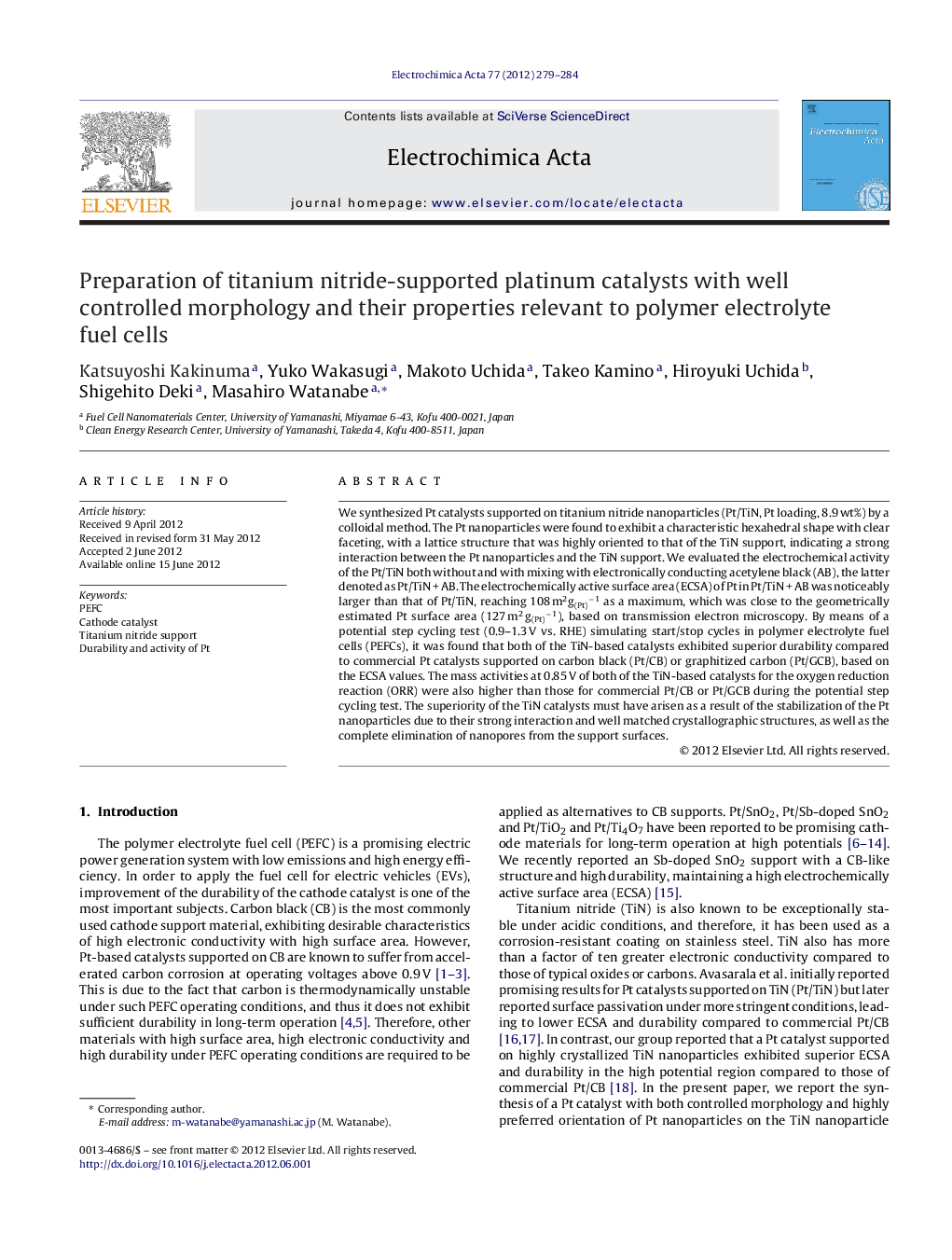| Article ID | Journal | Published Year | Pages | File Type |
|---|---|---|---|---|
| 188467 | Electrochimica Acta | 2012 | 6 Pages |
We synthesized Pt catalysts supported on titanium nitride nanoparticles (Pt/TiN, Pt loading, 8.9 wt%) by a colloidal method. The Pt nanoparticles were found to exhibit a characteristic hexahedral shape with clear faceting, with a lattice structure that was highly oriented to that of the TiN support, indicating a strong interaction between the Pt nanoparticles and the TiN support. We evaluated the electrochemical activity of the Pt/TiN both without and with mixing with electronically conducting acetylene black (AB), the latter denoted as Pt/TiN + AB. The electrochemically active surface area (ECSA) of Pt in Pt/TiN + AB was noticeably larger than that of Pt/TiN, reaching 108 m2g(Pt)−1 as a maximum, which was close to the geometrically estimated Pt surface area (127 m2 g(Pt)−1), based on transmission electron microscopy. By means of a potential step cycling test (0.9–1.3 V vs. RHE) simulating start/stop cycles in polymer electrolyte fuel cells (PEFCs), it was found that both of the TiN-based catalysts exhibited superior durability compared to commercial Pt catalysts supported on carbon black (Pt/CB) or graphitized carbon (Pt/GCB), based on the ECSA values. The mass activities at 0.85 V of both of the TiN-based catalysts for the oxygen reduction reaction (ORR) were also higher than those for commercial Pt/CB or Pt/GCB during the potential step cycling test. The superiority of the TiN catalysts must have arisen as a result of the stabilization of the Pt nanoparticles due to their strong interaction and well matched crystallographic structures, as well as the complete elimination of nanopores from the support surfaces.
